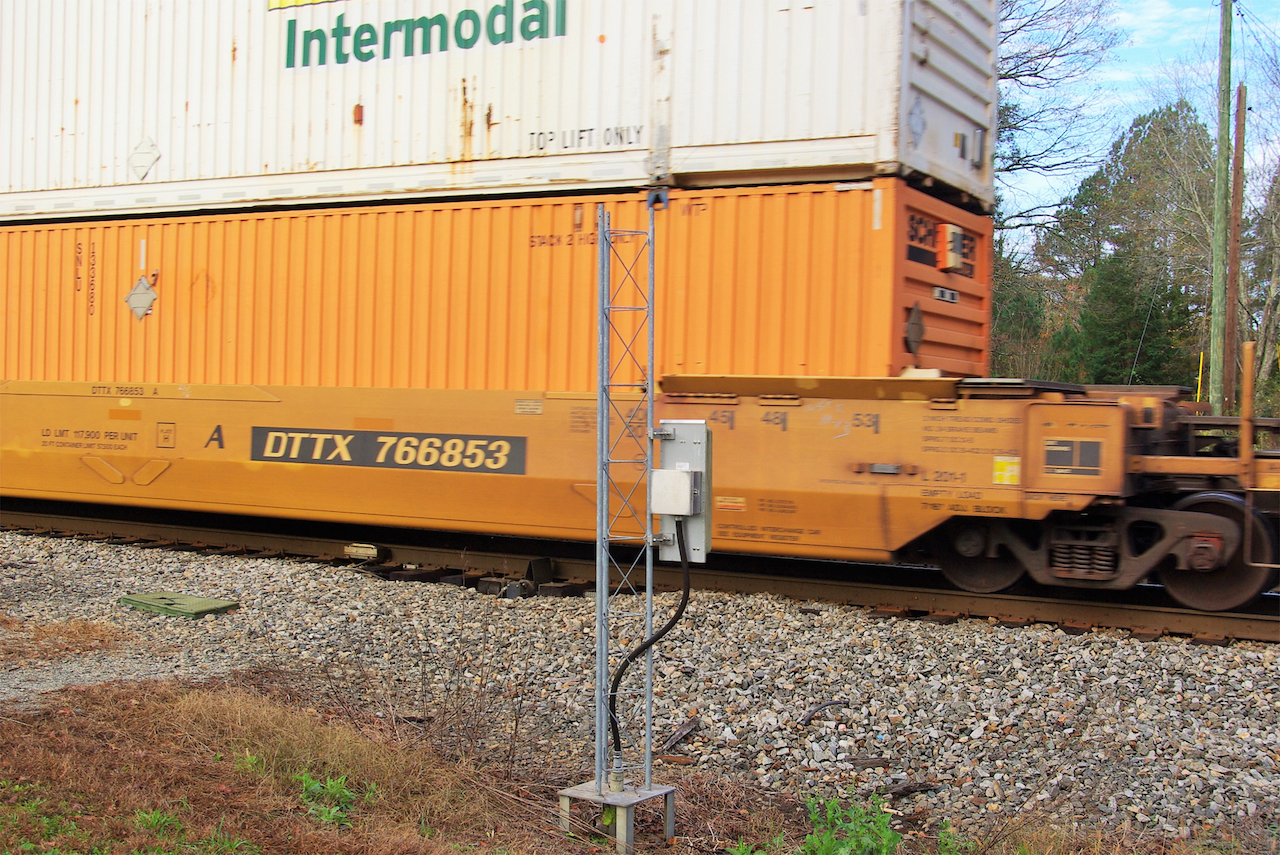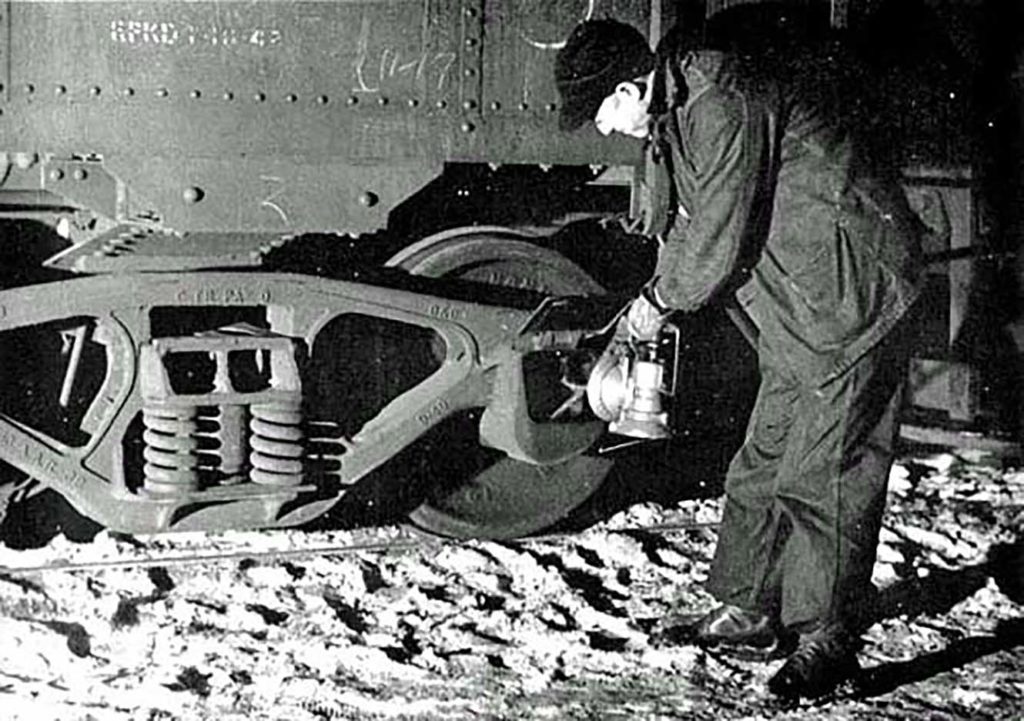
Making Sense of Burgeoning Railcar Data
Written by Gregg Phillips, Product Manager, TransmetriQ
Transmetriq photo
RAILWAY AGE, NOVEMBER 2023 ISSUE: Today’s railcar managers do a great job keeping cars healthy and moving, but they seek methods to further improve performance.
Railroads have long been technology leaders, driven by the complex management demands of a 140,000-mile network that reaches every populated part of North America.
Operating around the clock—safely, efficiently, and always under changing weather and market demands—every railroad depends on accurate, real-time data. Information critical to operations includes the location and status of roughly two million cars managed by owners, lessors, shippers, and other railroads.
From today’s perspective it might be hard to imagine that, until the 1960s, railroad operations were tracked and managed under a blizzard of paperwork. It was manually processed by tens of thousands of people whose most immediate forms of communication were teletype messages and voice conversations by telephone and radio. It’s little wonder, then, that railroads were early adopters of computer technology.
Modern-day remote railcar monitoring got its start in the 1960s with the advent of infrared “hotbox” detectors that recorded the temperature of passing bearings and alerted train crews to exceptions by radio. In the 1960s, computerization led to the development of the Universal Machine Language Equipment Register. Today we know it simply as Railinc’s Umler® system.
The industry’s years-long redevelopment led to the launch of a more capable Umler® in 2009. Today, Umler® and a set of related systems capture and manage the characteristics and status of virtually all North American freight rail equipment in near real time. The amount of information that can be reported in Umler® for each railcar has come a long way, from a limited number of punch-card data fields to hundreds of data points about car configuration, components and conditions.
More is More
The number and type of railcar detectors have multiplied to capture data on dragging equipment, components with acoustic signatures, shifted loads, truck hunting and geometry, wheel impact load and—most recently—GPS and comprehensive in-motion machine vision portals. All this gives managers more detailed data about the movement, status, and condition of equipment.
Today’s detectors are often co-located with Automatic Equipment Identification (AEI) sites that generate one car location message (CLM) for each car, but the resulting data is greatly magnified by what each detector is sensing and reporting. For example, when a car passes over a detector site, each wheel will throw off its own set of signals that can include dimensional data, measures of force, and temperature readings. The result is that Railinc now processes up to 10 million CLMs a day, and a considerable multiple of those when you account for all component-related detector reads flowing into industry systems.
While more data is generally a good thing to have, it presents a challenge: how to efficiently sort through it to access the information needed in time to use it effectively.
Today’s railcar managers do a great job of keeping cars healthy and moving, but they are seeking methods to further improve performance, including:
- A central resource to plan and oversee repairs, program maintenance, tracing, and analytics.
- An integrated view showing car status, health, location, and available shops matching their criteria in support of optimal repair decisions.
- More accurate specifications of repairs needed to speed notifications to shops for advanced planning and preparation for repairs. This includes automatically associating work needed for Damaged and Defective Car incidents and assigned program maintenance plans to return cars to service faster and to reduce the total number of shop visits.
- Better-defined and better-automated triggers for regular program maintenance opportunities.
- Improved tracking of maintenance progress both at the program level and single car level, with integrated data to support greater insights.
- Better tools to analyze trends in equipment performance and repair activity—improving the ability to spot and resolve emerging problems.
Details Matter
Those disparate needs are the reason there isn’t a “one-size-fits-all” railcar health program. Each car user has specific and unique fleet goals, component designs and qualities, and operations that are affected by a wide range of weight, speed, environmental, mileage, and other parameters.
The development of an ongoing maintenance program is also affected by many variables. As just one example, managers can now view the number of wheels that have been replaced for a slid-flat condition for various types of cars operating under a range of conditions. With good analytical tools, better inspection and replacement projections can be made for specific wheel types that are operating under specific conditions, potentially reducing the number of times cars are taken out of service.
When an alert indicates a car might need to be sent for repair, details are important. A manager might see a detector read indicating a temperature anomaly, but that doesn’t necessarily indicate a significant problem. Subsequent temperature readings will build more confidence in the wheel or bearing’s condition and—depending on the severity of the temperature variance—additional factors must be considered before action is taken.
Simple facts like the location and loaded/unloaded status of a car are critical when deciding if it should immediately be sent to a railroad repair shop. Other factors include program maintenance needs, shipper requirements, and available contract shops that do or don’t have an agreement in place with the owner.
Ideally managers in this situation would like to keep the car moving, safely, until the next actionable maintenance intervention. With the right data the decision can be made with confidence.
In addition to fleet managers, component manufacturers also need this kind of data to understand how their products are performing, and how future design changes could improve reliability and/or component life. Though proprietary considerations restrict the sharing of some data across all industry partners, there are channels that can provide valuable information.
As data is accumulated throughout the life of a certain wheel type, manufacturers can determine how their current designs are being affected under ton-mile loads, at different speeds, and in specific types of service. This can lead to better life cycle predictions and maintenance program planning, as well as design changes for an improved cost benefit ratio.
Will Only Larger Players Benefit?
Some owners and lessors of large fleets have the IT capability to create sophisticated and effective internal data management platforms. Other parties provide effective solutions to the industry at large, which means that the advanced capabilities fielded by large fleet operators no longer need to put manufacturers or managers of small and medium size fleets at a disadvantage. Data platforms are now available that can bring the power of AI, machine learning, and neural networks to most railcar designers and managers.
At the same time, off-the-shelf solutions are unlikely to be the most effective choice for railcar data management. The best providers are those with the experience and background to ask insightful questions, provide meaningful options and offer pilot programs that provide well-defined business cases before moving to more expansive programs and systems.
By proceeding in careful steps, managers can learn what works best and create buy-in from the C-suite and other stakeholders. Demonstrating success in a well-defined and documented short-term pilot can prove—in a relatively short time and at a relatively low cost—that there is a better way to operate cars than running them to failure and then scrambling to put them back in service.
Finding The Right Solution
Is there a “best solution” for your specific railcar data management situation? The answer is a qualified yes. Following a careful and thorough review of your current internal capabilities, data availability, fleet characteristics, asset management strategy, and market requirements, you can develop a solution that optimizes across all those factors. That solution, of course, will be unique to your needs.
If you manage a small- to medium-size fleet, the resources available from a rail-focused software and data management partner can be beneficial. Here’s what you should look for:
- A central resource to plan and oversee program maintenance, repairs, tracing, and analysis.
- Capability and experience defining program characteristics.
- Single-source access to fleet health and location data.
- Defined program triggers for program maintenance opportunities.
- Free text descriptions of maintenance and repair work.
- Storage of program-related documents (e.g., drawings).
- Initiation of shopping requests with shops that meet geographic and other parameters.
- Analysis of shop responses for availability, expected turnaround, and
- labor rates.
- Automatic association of DDCT incidents and car-specific program maintenance requirements with shopping requests to fully inform shops of
- work scope.
These and other requirements you might add will enable you to quickly eliminate unqualified providers and compare the attributes of those who remain in consideration.
Successful selection of the right partner can result in multiple strategic and tactical benefits including: more efficient creation of maintenance programs supported by near-real time, actionable data; effective communications with shops that are best equipped for specific needs; improved visibility in a shared data platform rather than using individual spread sheets; increased fleet maintenance program compliance and potential lower costs; minimized equipment downtime; and integrated data that provides instant insights into the status of your fleet maintenance program and progress toward completion of specific car repairs.
With today’s data management capabilities, railcar fleet managers can make better use of the data being produced by the vast array of North American wayside remote health detectors. It’s time to take a look at the performance of your current maintenance programs and railcar repair practices for the opportunities offered by data-driven, advanced technology platforms that can provide the most complete and up-to-date picture of your critical rail and supply chain operations.
The First Acoustic Wheel Defect Detectors?
Early detection of railcar wheel defects has been a subject of keen interest since well before computers and automatic devices were available. Ever-resourceful railroaders long ago recognized that the early iron—and then modern steel wheels—could develop cracks well before an in-service failure. Thus was born the railroad “car knocker.”

Though the exact origin of the practice described by this name seems lost to history, it likely was in use more than 100 years ago to describe a primary mission of employees who walked alongside trains during stops in yards and stations. Equipped with a hammer, car knockers tapped each wheel they passed listening for the tell-tale sounds that a cracked wheel would make, as compared to the “ring” given off by a defect-free wheel.
How many miles were walked, and how many boots worn out, is anyone’s guess. But there is little doubt that the constant vigilance of car knockers who worked day and night and in all kinds of weather saved lives and property.
About TransmetriQ
TransmetriQ is a group of Railinc transportation experts, product managers, UX designers, software developers, data scientists, and critical thinkers developing insights and solutions that help customers build businesses that compete and win. Our teams work to improve our current products and develop the next generation of business-oriented transportation solutions. Visit us at www.transmetriq.com.



